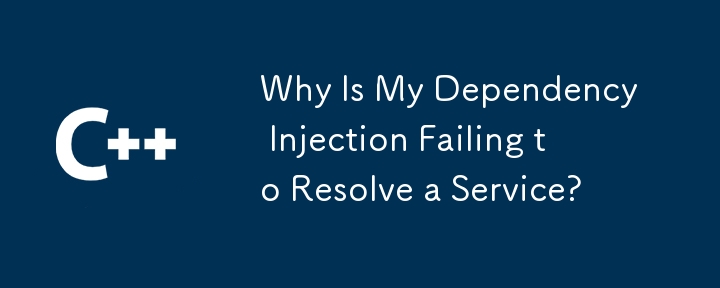Found a total of 10000 related content

Explain Angular dependency injection
Article Introduction:Dependency injection (DI) is the core mechanism of the Angular framework, which reduces inter-class coupling by providing dependencies externally rather than creating them by itself. 1. DI automatically passes dependency instances through constructor parameters, such as constructor(privateservice:DataService); 2. Angular supports multi-level injectors: root injector (providedIn:'root') provides global singleton services, module/component-level injectors limit service scope; 3. Common injection methods include constructor injection (most commonly used), attribute injection and method parameter injection; 4. Notes include avoiding circular dependencies, preventing duplicate services from causing non-singleton problems, and using APP_I
2025-06-29
comment 0
589
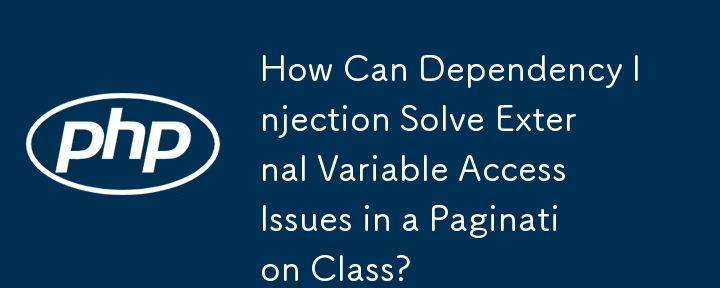

How to mock a global PHP function in PHPUnit?
Article Introduction:In PHPUnit, you can mock global functions by namespace overlay, PHPTestHelpers extension, or encapsulating global functions as classes. 1. Use namespace: Rewrite the function under the same namespace as the code under test, which is only suitable for non-global calls; 2. Use PHPTestHelpers extension: Replace any global function through override_function(), but need to modify the php.ini configuration; 3. Encapsulate it as a class and dependency injection: encapsulate the global function into the class and use it through dependency injection. This class can be directly mocked during testing. This method is easier to maintain and comply with design principles.
2025-07-09
comment 0
255
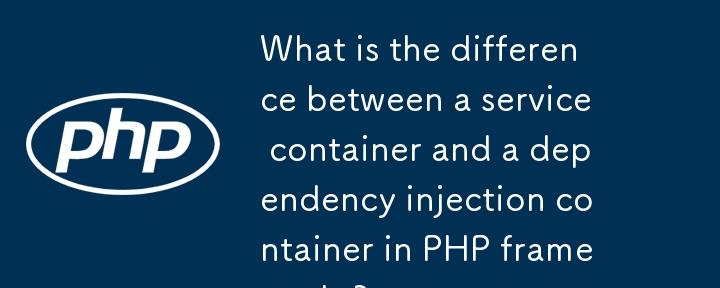
What is the difference between a service container and a dependency injection container in PHP frameworks?
Article Introduction:Service containers and dependency injection containers are often mentioned in the PHP framework. Although they are related, they are different. Dependency injection containers (DICs) focus on automatically parsing class dependencies, such as injecting objects through constructors without manual instantiation. The service container extends its functions on this basis, including binding interfaces to specific implementations, registering singletons, managing shared instances, etc. When using it, if the class dependency resolution or cross-frame scenarios are discussed, it should be called DIC; if it involves service management within the framework, it is called a service container. The two are often integrated in modern frameworks, but understanding their differences can help to gain a deep understanding of the framework mechanism.
2025-06-04
comment 0
823

Implementing Dependency Injection in Java Applications
Article Introduction:Dependency injection (DI) achieves decoupling through the dependencies of external control objects, improving code testability, maintainability and flexibility. 1. DI is a design pattern, and the core is to create it by external incoming dependencies rather than objects themselves; 2. Common injection methods include constructor injection (most commonly used), Setter injection (suitable for optional dependencies), and field injection (not recommended); 3. DI can be implemented manually, such as passing dependencies through constructors; 4. Using Spring framework can simplify dependency management, and automatically handle dependencies through @Component and @Autowired annotations; 5. Pay attention to avoiding complex constructors and bean conflicts, not all classes need framework management. Mastering these key points can make it more efficient in Java
2025-07-04
comment 0
394

Explain the concept of Service Container 'binding' in Laravel.
Article Introduction:In Laravel, "binding" refers to the parsing method of registering classes, interfaces or services through the service container to achieve automatic dependency injection. The essence of binding is to define how to create or obtain an instance of a dependency, rather than simple storage. Common types include simple binding, interface-to-implementation binding, and singleton binding. Binding should be performed in the service provider's register() method, which is suitable for situations where switching implementations, complex construction parameters, or third-party class injection, but problems such as excessive use or uncleared binding cache should be avoided.
2025-07-16
comment 0
877
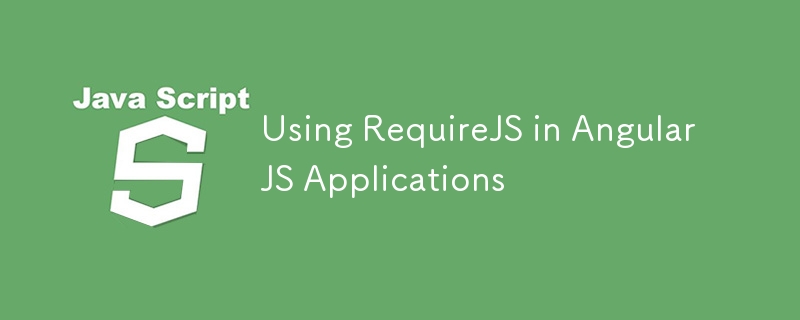
Using RequireJS in AngularJS Applications
Article Introduction:Core points
RequireJS is a JavaScript library that simplifies JavaScript dependencies loading and improves the maintainability of the code base. It is especially useful in large projects, as tracking dependencies in large projects can be challenging.
Angular's dependency injection system and RequireJS' dependency management have different functions. AngularJS handles the required Objects in the component, while RequireJS handles modules or JavaScript files.
AngularJS components can be defined as RequireJS modules and can be manually booted because the required script files need to be loaded asynchronously.
2025-02-20
comment 0
596

Understanding Dependency Injection in Laravel?
Article Introduction:Dependency injection automatically handles class dependencies through service containers in Laravel without manual new objects. Its core is constructor injection and method injection, such as automatically passing in the Request instance in the controller. Laravel parses dependencies through type prompts and recursively creates the required objects. The binding interface and implementation can be used by the service provider to use the bind method, or singleton to bind a singleton. When using it, you need to ensure type prompts, avoid constructor complications, use context bindings with caution, and understand automatic parsing rules. Mastering these can improve code flexibility and maintenance.
2025-07-05
comment 0
1049

What is tight coupling vs loose coupling?
Article Introduction:Tight coupling refers to the existence of a strong dependency between modules, such as the class directly instantiates another concrete class, resulting in multiple adjustments required to modify one place; loose coupling refers to reducing dependencies through interfaces, abstract classes, etc., improving flexibility and maintainability. 1. The phenomenon of tight coupling includes directly instantiating specific classes, calling dependency specific implementations, and altering involves multiple modules; 2. The loose coupling implementation methods include using interfaces or abstract classes, dependency injection, event-driven communication, and API calls to replace direct references; 3. Selection based scenarios: tight coupling is suitable for small projects, performance sensitive, and module stability, and loose coupling is suitable for complex systems, team collaboration, and scenarios that require flexible expansion.
2025-06-26
comment 0
940

What are C# attributes and how to create a custom attribute?
Article Introduction:To create your own C# custom properties, you first need to define a class inherited from System.Attribute, then add the constructor and attributes, specify the scope of application through AttributeUsage, and finally read and use them through reflection. For example, define the [CustomAuthor("John")] attribute to mark the code author, use the [CustomAuthor("Alice")] to modify the class or method when applying, and then obtain the attribute information at runtime through the Attribute.GetCustomAttribute method. Common uses include verification, serialization control, dependency injection, and
2025-07-19
comment 0
965

Deep dive into the Laravel Service Container and Dependency Injection
Article Introduction:Laravel's service container is a core tool for managing class dependencies and executing dependency injection. It simplifies code development and maintenance by automatically instantiating objects and their recursive dependencies. 1. The service container is like a "factory" that can automatically create and pass the required objects; 2. Support constructor injection (most commonly used), method injection (used in the controller type prompt), and setter injection (suitable for optional dependencies); 3. The binding methods include simple binding, singleton binding, and interface binding implementation classes to achieve decoupling; 4. In most cases, the container automatically resolves dependencies, and can also manually obtain instances through app() or make(); 5. Alias ??can be set for the binding and the binding is registered by the service provider to improve the application organizational structure and maintainability.
2025-07-03
comment 0
887
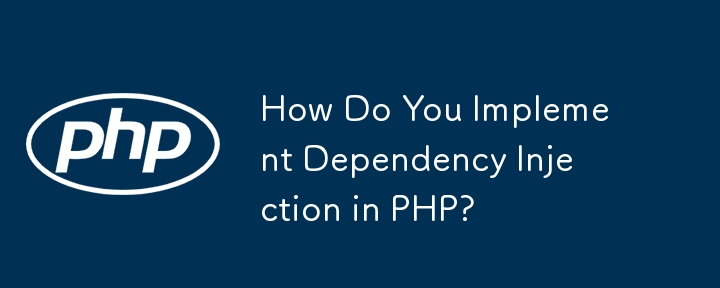
How Do You Implement Dependency Injection in PHP?
Article Introduction:Dependency injection (DI) is a way in PHP to pass dependencies to a class rather than hard-coded inside a class. 1. DI passes the dependencies of the object to the outside through constructors or settings methods to improve code flexibility and testability; 2. DI can be implemented manually, suitable for small projects; 3. Complex applications can use DI containers to automatically resolve dependencies, such as Symfony and Laravel built-in containers; 4. Common misunderstandings include premature over-design, type prompts specific implementation rather than interfaces, abuse of service locators, etc. Correct use of DI can significantly improve code quality and maintenance efficiency.
2025-07-18
comment 0
808

Drupal 8 Modules - Configuration Management and the Service Container
Article Introduction:Core points
Drupal 8's ConfigFormBase class provides additional functionality to interact with the configuration system, allowing tools to convert forms to stored values. This can be done by replacing the extension class with ConfigFormBase and making the necessary changes in the form. The configuration in Drupal 8 is stored in a YAML file and can be changed through the UI for deployment across different sites.
The service container in Drupal 8 allows the creation of a service, that is, a PHP class that performs global operations, and registers it into the service container for access. Dependency injection is used to pass objects to other objects, ensuring decoupling. You can create de in the root directory of the module
2025-02-21
comment 0
1199

Angular 2 Components and Providers: Classes, Factories & Values
Article Introduction:Core points
Angular 2 components are able to use providers, a set of injectable objects that components can use. Providers are the basis of Angular 2 Dependency Injection (DI) systems.
Providers can be divided into three types: class provider, factory provider and value provider. The class provider generates an instance of the class, the factory provider generates the return value of the specified function, and the value provider directly returns its value.
Angular 2's DI system allows registering classes, functions, or values ??(called providers), addressing dependencies between providers, making the provider's results work in code, and maintaining the injector hierarchy.
Angular's injector creates only one
2025-02-15
comment 0
762

Using C# Source Generators for Code Generation
Article Introduction:Using SourceGenerators in C# projects can improve performance, reduce reflections, and optimize development experience by generating code during compilation. Specific methods include: 1. Create a class library project and reference the necessary NuGet package; 2. Implement the ISourceGenerator interface and override the Initialize and Execute methods; 3. Check the class with a specific Attribute in Execute and generate code. Common uses include attribute notification, serialization support, dependency injection registration, and constant generation. Debugging skills include outputting logs, attaching compilation processes, and writing unit test verification generation code. Be careful to avoid complex logic affecting the construction speed and select appropriate technologies such as reflection or IL based on the scene.
2025-07-04
comment 0
244

Using Artisan tinker for debugging in Laravel.
Article Introduction:ArtisanTinker is a powerful debugging tool in Laravel. It provides an interactive shell environment that can directly interact with applications to facilitate rapid problem location. 1. It can be used to verify model and database queries, test whether the data acquisition is correct by executing the Eloquent statement, and use toSql() to view the generated SQL; 2. It can test the service class or business logic, directly call the service class method and handle dependency injection; 3. It supports debugging task queues and event broadcasts, manually trigger tasks or events to observe the execution effect, and can troubleshoot problems such as queue failure and event failure.
2025-07-16
comment 0
152
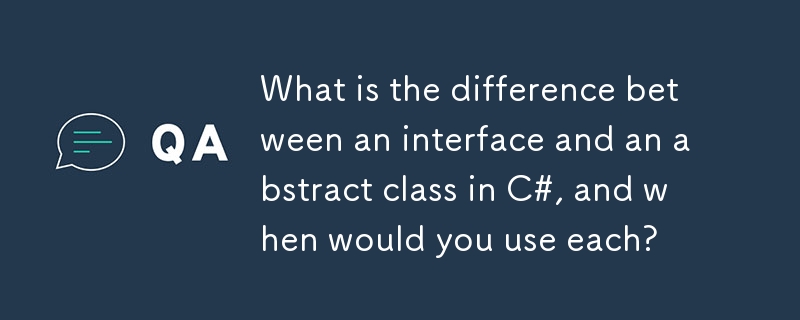
What is the difference between an interface and an abstract class in C#, and when would you use each?
Article Introduction:In C#, interfaces are used to define behavior contracts that need to be implemented by multiple unrelated classes, suitable for multiple inheritance, dependency injection and unit testing; abstract classes are used for closely related classes of shared logic, supporting fields, access modifiers and constructors. 1. The interface defines behavioral contracts, supports default implementations, but is mainly used for structural constraints; 2. The abstract class contains abstract and concrete methods, providing shared logic; 3. The interface allows multiple implementations, without fields and constructors, and members are exposed by default; 4. The abstract class can only inherit a single one, and can have private members and constructors; 5. The interface is suitable for plug-in architecture and API design, and the abstract class is suitable for "is-a" relationship modeling; 6. It can be used in combination, and the abstract class implements the interface to provide basic implementation. Selection depends on design objectives: interface focus capability, abstract class
2025-06-22
comment 0
191
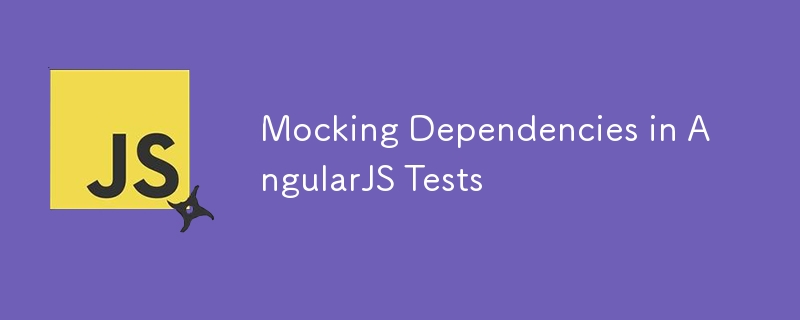
Mocking Dependencies in AngularJS Tests
Article Introduction:Core points
AngularJS is born with testing in mind, and its built-in dependency injection mechanism makes it possible for every component to be tested using any JavaScript testing framework (such as Jasmine).
Mocking in unit testing involves the ability to isolate test code snippets, which can be challenging because the dependencies come from different sources. Mocking in AngularJS is simplified by the angular-mocks module, which provides simulations for a set of commonly used AngularJS services.
Service simulation in AngularJS can be achieved by obtaining instances of actual services and listening to services, or using $provide to implement simulation services.
2025-02-20
comment 0
531

How to use Angular services
Article Introduction:Angular services are classes with @Injectable() decorators that encapsulate reusable business logic, data storage, or interface calls. 1. It is created through the AngularCLI command nggenerateservice and registered to the root injector by default; 2. It is used through dependency injection in the component, and can be declared directly in the constructor; 3. Services can depend on each other and support hierarchical design, such as data services, tool services and state services; 4. The service is a singleton by default, and it needs to pay attention to memory management and clean up subscriptions and useless data in a timely manner. Rational use of services can improve application structure clarity, maintainability and testability.
2025-06-28
comment 0
263
